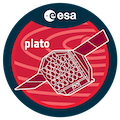Speaker
Description
ESA PLATO and NASA Roman are both scheduled for launch in 2026, and both will undertake ground-breaking exoplanet surveys that will be transformative for studies of exoplanetary architecture. As the recently appopinted ESA Scientist to the Roman Galactic Exoplanet Survey, I will outline the Roman exoplanet science goals and highlight powerful PLATO-Roman science synergies. Roman will have similar sensitivity and resolutiuon to Hubble, but with over 100x the field of view. Over a nominal 5-year lifetime it is expected to detect up to 200,000 transiting planets spanning across Galactic distances, as well as around 1,400 cool planets using microlensing. This sample will provide a "far-field" counterpart to PLATO's "near-field" exoplanet catalogue. Roman data will be world public within days of observation. The complemetarity of PLATO and Roman datasets offers an unparalled opportunity to map out exoplanetary architecture across Galactic distance scales. In particular, I argue that a joint PLATO-Roman analysis can provide the first reliable measurement of the number of habitable zone planets throughout the Galaxy.

